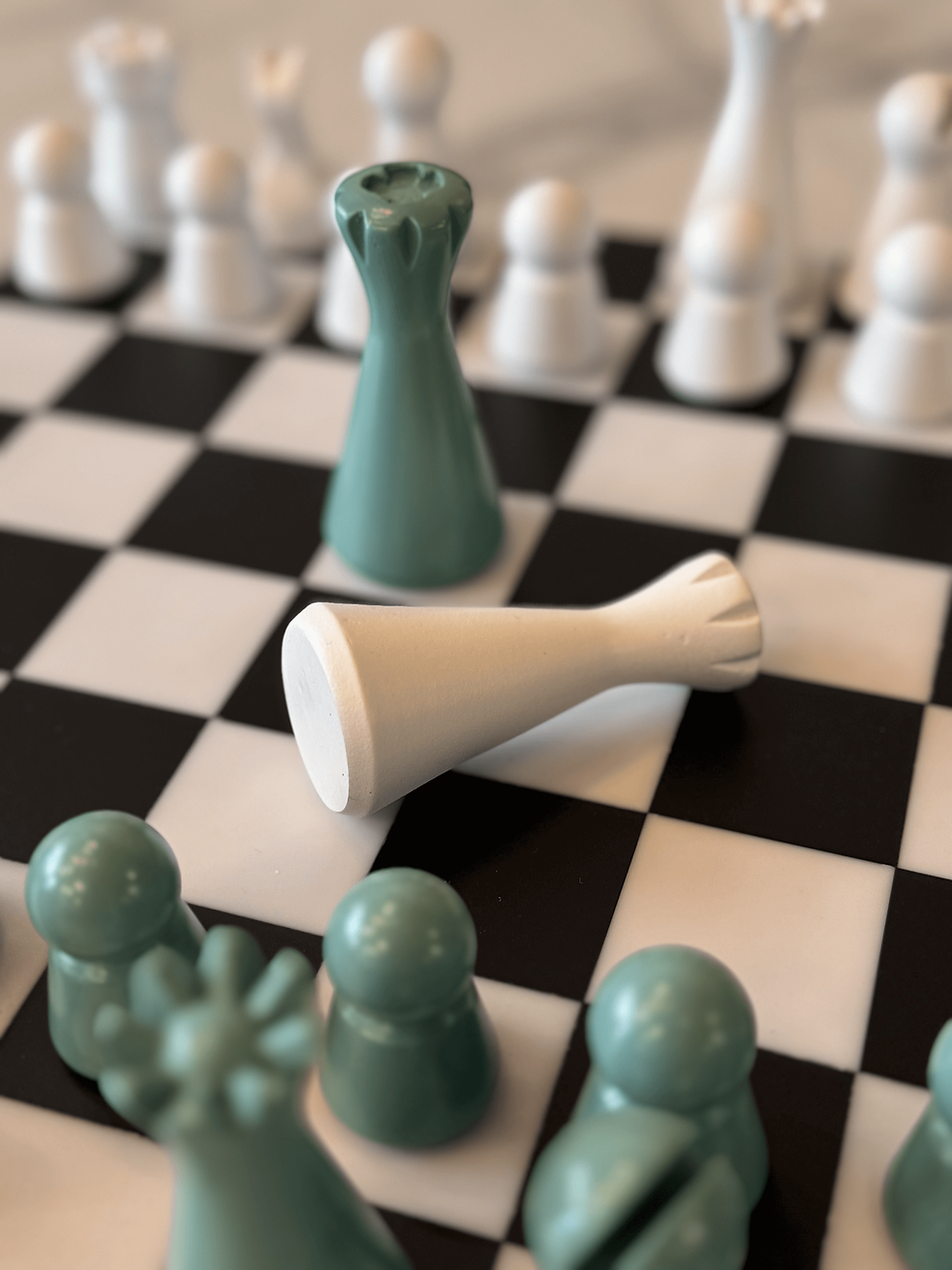Mastering Common Chess Strategies: A Guide for All Levels
- Junce Chess

- Sep 4, 2024
- 4 min read
Chess is a game of strategy, where each move requires careful thought and planning. Whether you're a beginner or an experienced player, understanding common chess strategies can give you a significant edge over your opponents. This guide will walk you through some of the most important strategies in chess, from basic principles to advanced tactics, helping you improve your game and think like a grandmaster.

Opening Strategies
1. Control the Center
One of the most fundamental principles in chess is controlling the center of the board. The center squares (d4, d5, e4, e5) are key because they allow your pieces to move freely and exert influence across the board. By placing your pawns and pieces in the center, you gain control over the game and limit your opponent's options.
Example: The King's Pawn Opening (1. e4) and the Queen's Pawn Opening (1. d4) are popular moves that help control the center early in the game.
2. Develop Your Pieces
In the opening phase, it's essential to develop your pieces—knights, bishops, and eventually your rooks and queen—into active positions. The goal is to prepare your army for battle and connect your rooks by moving your queen off the back rank. Avoid moving the same piece multiple times in the opening unless necessary, as this can waste valuable tempo.
Tip: Aim to get your knights and bishops out early, placing them on squares where they can control key areas of the board.
3. Ensure King Safety
Castling is a crucial move that helps protect your king while also developing your rook. It's generally advisable to castle early in the game, either kingside (short castling) or queenside (long castling), to shield your king from potential attacks and bring your rook into play.
Pro Tip: Avoid delaying castling too long, as leaving your king in the center can expose it to threats.
Middlegame Tactics
1. Create and Exploit Weaknesses
The middlegame is where most of the action happens, and creating weaknesses in your opponent's position can give you a significant advantage. Look for ways to undermine your opponent's pawn structure, force them into uncomfortable positions, and capitalize on any weak squares or isolated pawns.
Example: Attacking a weak pawn that is difficult to defend, or exploiting an open file with your rooks.
2. Tactical Motifs
Understanding common tactical motifs can help you spot opportunities to win material or gain a better position. Some of the most well-known motifs include:
Forks: A single piece attacks two or more of your opponent's pieces simultaneously.
Pins: A piece is pinned when it cannot move without exposing a more valuable piece behind it.
Skewers: A line piece (like a rook or bishop) attacks a more valuable piece, forcing it to move and exposing a less valuable piece behind it.
Discovered Attacks: Moving a piece that uncovers an attack by another piece.
Practice: Regularly solving chess puzzles can help you recognize these tactical opportunities in your games.
3. Improve Your Pieces
As the game progresses, look for ways to improve the position of your pieces. Aim to place your pieces on squares where they can control more territory and have greater influence. Avoid passive positions, and try to restrict your opponent's pieces from becoming active.
Example: Moving your knight to a strong outpost (a square that cannot be attacked by enemy pawns) can give you a powerful piece that controls key squares.
Endgame Strategies
1. King Activity
In the endgame, the king becomes a powerful piece that can influence the outcome of the game. Unlike in the middlegame, where the king is often vulnerable, the endgame allows the king to become more active. Use your king to support your pawns and pieces in advancing toward promotion.
Tip: Bring your king toward the center of the board in the endgame to exert maximum influence.
2. Pawn Promotion
Pawn promotion is often the decisive factor in endgames. The goal is to advance your pawns to the eighth rank, where they can be promoted to a queen (or another piece of your choice). Understanding key endgame principles, such as opposition and the concept of "shouldering," can help you successfully promote your pawns.
Example: In a king and pawn endgame, use your king to control key squares and guide your pawn to promotion.
3. Simplification
If you're ahead in material, consider simplifying the position by trading pieces. This can reduce your opponent's chances of creating counterplay and make it easier for you to convert your material advantage into a win. However, be careful not to simplify too early, as this could eliminate your winning chances if the position becomes too equal.
Pro Tip: Look for favorable exchanges that leave you with a winning endgame or a decisive material advantage.
Mastering common chess strategies can take your game to the next level, whether you're playing casually or competitively. By focusing on controlling the center, developing your pieces, and using tactical motifs, you'll become a more formidable opponent. Additionally, improving your endgame skills will allow you to convert advantages into victories more consistently.
Looking to enhance your chess experience further? Check out our beautifully crafted chess sets at Junce Chess and bring style and elegance to your games. Whether you're a seasoned player or just starting, our unique designs will inspire every move you make.

Comments